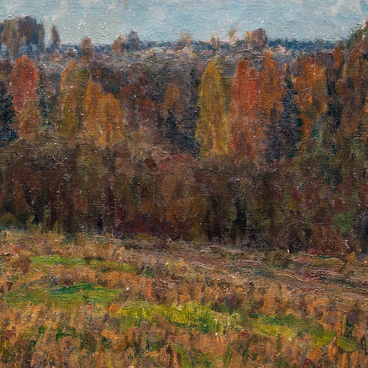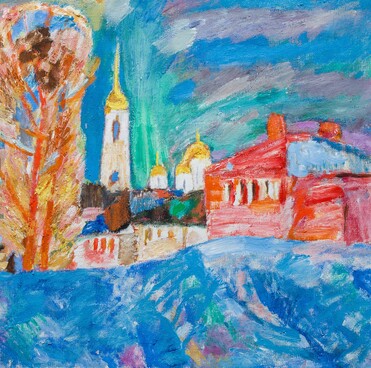Kim Nikolaevich Slavin (1928–1991) was born in Leningrad in 1928. He was the youngest, seventh child in the family. His father, a revolutionary and a specialist at a shipbuilding plant, was arrested in 1937, after which he was executed. In the first years of the Great Patriotic War, Kim Slavin was evacuated and lived in a boarding school.
In 1943, the young man returned to besieged Leningrad on the initiative of the city’s leaders, who were already planning restoration in those terrible days. Children were taught the necessary skills to restore the city. In 1947, Kim Slavin was among the first students to graduate from the art school as a “master of pictorial and decorative works”. He was enrolled in the Leningrad School of Art and Industry (the former Baron Alexander von Stieglitz School).
For seven years he was engaged in the restoration of destroyed architectural monuments of Leningrad and its suburbs. During that period, he also painted over 100 landscapes. In 1960, thanks to these works, he was accepted as a member of the Artists’ Union of the USSR.
The State Russian Museum acquired most of the works of Kim Nikolaevich Slavin. The artist was a Russian intellectual, for him the Motherland and nature formed a single whole. Describing the principles of his art, he emphasized that he sought to be closer to nature and to catch the finest transitions and nuances without diminishing the importance of the drawing.
Kim Slavin also painted portraits and still lifes. However, he gained fame and recognition as a master of lyrical landscape: his skill was distinguished by a high professional level of painting and a fine sense of Russian Realism. All this can be observed in the painting “Field”.
Kim Slavin answered the
question of the Russian Museum “What do you want to say with your works?” as
follows,


